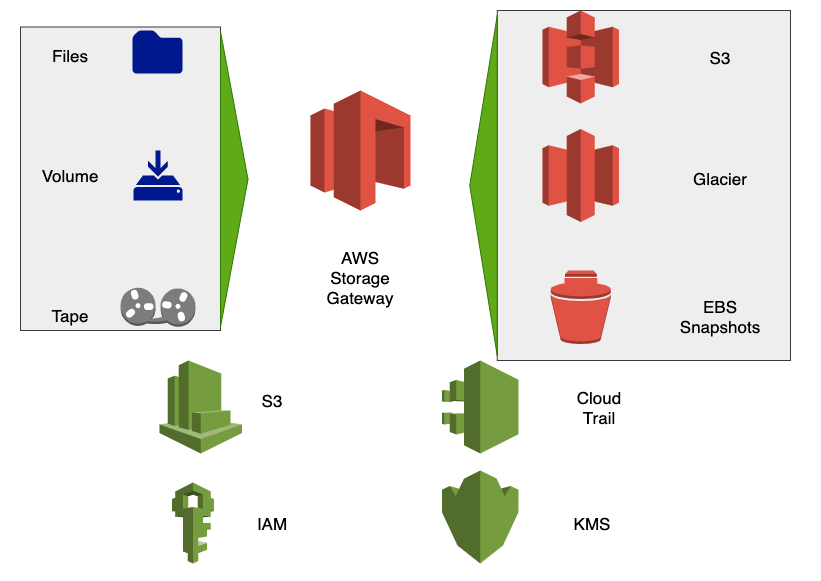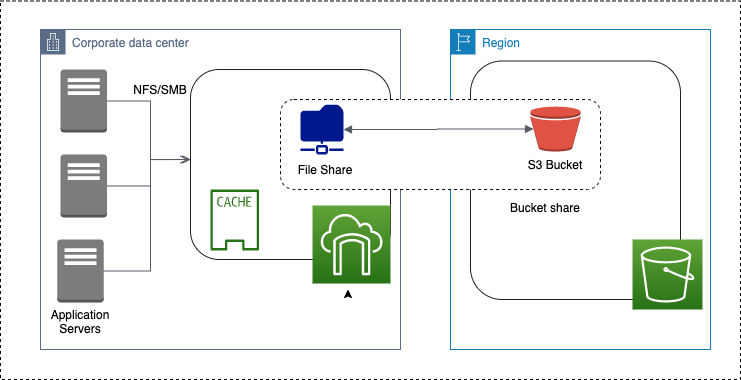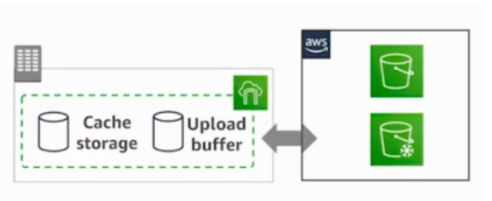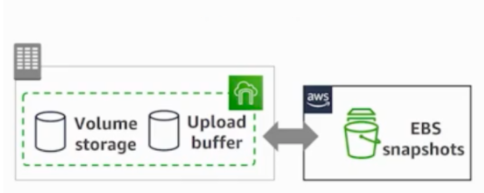Let’s get a quick overview of AWS Storage Gateway from an AWS certification perspective. We will look at important certification questions regarding AWS Storage Gateway.
You will learn
- What is AWS Storage Gateway?
- Why do we need AWS Storage Gateway?
- How is AWS Storage Gateway different from?
- Compare Storage Gateway Options - AWS Storage File Gateway vs AWS Storage Tape Gateway vs AWS Storage Volume Gateway
AWS Storage Gateway

- Hybrid storage (cloud + on premise)
- Unlimited cloud storage for on-premise software applications and users with good performance
- (Remember) Storage Gateway and S3 Glacier encrypt data by default
- Three Options
- AWS Storage File Gateway
- AWS Storage Tape Gateway
- AWS Storage Volume Gateway
- VM image with AWS Storage Gateway software deployed on-premises
AWS Storage File Gateway

- Problem Statement: Large on-premise file share with terabytes of data
- Users put files into file share and applications use the files
- Managing it is becoming expensive
- Move the file share to cloud without performance impact
- AWS Storage File Gateway provides cloud storage for your file shares
- Files stored in Amazon S3 & Glacier
- Supports Network File System (NFS) and Server Message Block (SMB)
AWS Storage File Gateway

- File gateway deployed as virtual machine on-premises
- Maintains a local cache with most recently used objects
- Benefits from S3 features
- High durability, low-cost, lifecycle management and cross-region replication
- Benefits from S3 integrations
- Data analytics and machine learning applications using Amazon EMR or Amazon Athena
- Each file gateway supports up to 10 bucket shares
AWS Storage Tape Gateway

- Tape backups used in enterprises (archives)
- Stored off-site - expensive, physical wear and tear
- AWS Storage Tape Gateway - Avoid physical tape backups
- No change needed for tape backup infrastructure
- Backup data to virtual tapes (actually, Amazon S3 & Glacier)
- Benefit from S3 features
- encryption, high durability, low-cost, and cross-region replication
- Use S3 lifecycle management
- move data to S3 Glacier and S3 Glacier Deep Archive
AWS Storage Volume Gateway

- Volume Gateway : Move block storage to cloud
- Supports iSCSI protocol
- Reduce costs
- Automate backup and disaster recovery
- Use AWS Backup for backup and restore
- Use cases
- Backup and disaster recovery
- Migration of application data
AWS Storage Volume Gateway - Cached and Stored


- Cached (Gateway Cached Volumes):
- Primary Data Store - AWS - Amazon S3
- On-premise cache stores frequently accessed data
- Data in S3 CANNOT be accessed directly
- Take EBS snapshots from cached volumes
- Stored (Gateway Stored Volumes):
- Primary Data Store - On-Premises
- Asynchronous copy to AWS
- Stored as EBS snapshots
- For disaster recovery, restore to EBS volumes
AWS Storage Gateway - Summary
- Key to look for : Hybrid storage (cloud + on premise)
- File share (NFS or SMB) + Looking for S3 features and integrations => AWS Storage File Gateway
- Tapes on cloud => AWS Storage Tape Gateway
- Volumes on cloud (Block Storage) => AWS Storage Volume Gateway
- High performance => Stored
- Otherwise => Cached
- Needs additional setup on-premises
- VM image with AWS Storage Gateway software deployed on-premises or on EC2 instance